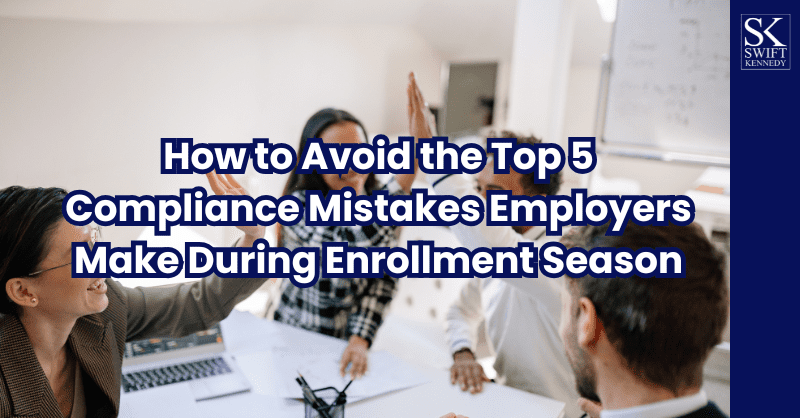
How to Avoid the Top 5 Compliance Mistakes Employers Make During Enrollment Season
In last week’s blog, we reviewed the five most common compliance mistakes employers make during open enrollment. From missing required notices to overlooking ACA rules, each one can create financial penalties and administrative headaches. The good news is that every mistake has a solution. With preparation and the right processes in place, HR leaders can run an enrollment that is smooth, compliant, and less stressful for employees.
Get Organized with a Compliance Checklist
One of the biggest mistakes employers make is overlooking required notices. Medicare Part D Creditable Coverage, CHIPRA, HIPAA Special Enrollment, and WHCRA are just a few of the disclosures that must go out during open enrollment. It’s a lot to manage, and it’s easy for one to slip through the cracks.
The simplest safeguard is a compliance checklist. Map out every required federal and state notice, and add them to your open enrollment packet. When notices are delivered consistently, you reduce risk and save your HR team from scrambling to fix oversights later.
Document Employee Elections Properly
Another frequent misstep is failing to properly document elections and waivers. Verbal confirmations and incomplete forms don’t hold up in an audit, and under ERISA, employers are expected to keep accurate records for years.
Moving enrollment online is the most effective solution. Digital systems create an automatic paper trail of elections, waivers, and acknowledgments. If paper enrollment is still in use, develop a recordkeeping protocol that ensures every form is stored securely for at least six years. Documentation isn’t just a technicality; it’s your protection if compliance is ever questioned.
Confirm ACA Affordability Ahead of Time
Affordable coverage under the ACA isn’t optional for Applicable Large Employers. Yet many organizations wait until after enrollment to discover their contribution levels don’t meet affordability standards. That’s when penalties under Section 4980H become a real possibility.
The fix is proactive testing. Before enrollment opens, run your contribution levels through one of the IRS safe harbors (W-2, Rate of Pay, or Federal Poverty Line). If the numbers don’t work, you still have time to adjust employee costs. This small step not only protects the business from penalties, but it also gives employees confidence that they’re being offered coverage that meets federal standards.
Create a Reliable COBRA Workflow
COBRA election notices are time-sensitive, and missing the deadlines is a mistake that shows up often. Employers have 30 days to report a qualifying event to the plan administrator, who then has 14 days to send the election notice. If the employer is also the administrator, the entire process must be completed within 44 days.
Employees then have at least 60 days to elect coverage.
The way to prevent errors is to make COBRA communication automatic. Some employers choose to outsource this to a COBRA vendor, while others build internal procedures with clear timelines and responsible parties. Either option is better than leaving it to chance. A reliable system ensures compliance, and more importantly, ensures employees don’t lose access to the continuation coverage they’re entitled to.
Track State-Level Requirements
Finally, compliance isn’t just about federal laws. States may require continuation notices, paid leave notices, or premium assistance notices. Employers that operate in multiple states often stumble here because they assume federal notices are enough.
The solution is to treat state rules with the same discipline as federal ones. Maintain a state-by-state compliance checklist, review it annually, and confirm distribution methods align with each state’s requirements. This extra step keeps multi-state employers aligned with all obligations, no matter where employees live.
Final Thoughts
Every one of last week’s mistakes has an answer. With the right systems in place, employers can approach open enrollment with confidence.
Compliance doesn’t have to be reactive or overwhelming. When preparation is built into the process, HR teams stay focused on guiding employees through their options instead of worrying about penalties or audits.
At Swift Kennedy, we work with employers to put these safeguards in place, helping them move from simply avoiding mistakes to building an enrollment process that is seamless, compliant, and employee-friendly. Contact us today to learn more.
